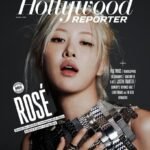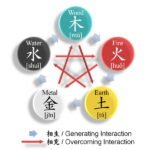Introduction to K-Pop and Demon Hunters
The K-Pop phenomenon has transcended music, emerging as a cultural force that influences diverse aspects of entertainment, fashion, and even social interaction. Originating from South Korea, K-Pop is characterized by its catchy melodies, intricate choreography, and visually captivating music videos. Over the past two decades, the genre has garnered a global fanbase, marked by organized fandoms that actively engage with their favorite artists and the broader cultural landscape. This phenomenon represents not only a musical style but also a unique blend of artistry and cultural storytelling.
Central to K-Pop’s allure is its ability to seamlessly intertwine with various narratives, including supernatural themes such as demon hunting. The concept of demon hunters often appears in various forms of media within the South Korean cultural sphere, drawing from historical legends and folklore. These characters embody ideals such as bravery, sacrifice, and the celebration of humanity’s resilience against malevolent forces. This thematic element resonates particularly well within K-Pop, as many idol groups adopt fantastical visual concepts and dramatic storylines that parallel the narrative arcs of demon hunting.
Through collaborations across music, television, and webtoons, K-Pop idols are often portrayed as demon hunters or figures in a narrative that involves battling evil forces, thus captivating the audience’s imagination. The intersection of K-Pop and demon hunting captivates fans by merging their love for music with rich storytelling that taps into shared cultural folklore. By setting the stage for an exploration of historical items, notable characters, and iconic scenes associated with this fascinating fusion, it becomes evident why this unique blend appeals to the extensive K-Pop fanbase. As the genre continues to evolve, the themes of heroism and the fantastical are likely to remain an influential source of inspiration for artists and audiences alike.
The Historical Context of Demon Hunting in Korea
Demon hunting in Korea is deeply rooted in the nation’s cultural and historical landscape, with traditional beliefs surrounding spirits and ghosts playing a pivotal role in shaping narratives. Shamanism, the indigenous spiritual practice prevalent in Korea, has been fundamental in articulating the relationship between humans and the spiritual realm. Shamans, or ‘mudang’, are believed to possess the unique ability to communicate with spirits, providing insight, healing, and guidance. This established a backdrop for demon hunting as a metaphorical and literal struggle against malevolent forces that threaten the harmony of communities.
Throughout Korean history, a myriad of ghostly tales has emerged, often reflecting the moral quandaries faced by society. One significant historical figure linked to demon hunting is Kim Yu-sin, a revered general from the Silla Dynasty, who was said to have encountered various supernatural entities during his campaigns. These encounters are not merely tales of heroism but are emblematic of the broader discourse on good versus evil in Korean folklore. Such stories underscore a crucial dynamic: the belief that the presence of malevolent spirits in the world necessitates the need for courageous individuals to confront and banish them.
Additionally, various cultural artifacts, like the ‘gugwan’ (spirit stone) and ‘sangju’ (spirit tablet), reveal how Koreans historically sought protection against demons. The creation of these items showcases efforts to cultivate an environment of spiritual security, further solidifying the importance of demon hunters in folklore. As time progressed, the narrative of the demon hunter evolved, blending traditional beliefs with modern entertainment forms, inspiring characters seen in contemporary K-Pop media. The intersection of historical beliefs and modern storytelling enriches the understanding of the themes represented in K-Pop, particularly around resilience and the battle against adversity.
Iconic Historical Items Used by Demon Hunters
Demon hunters in Korean culture utilize a variety of historical items that are rich in symbolism and functionality. Each item plays a crucial role in the fight against evil spirits, offering insights into the fervent beliefs and practices within this tradition. One prominent item is the talismans, known as “bukbu.” These paper or cloth pieces are inscribed with specific characters and prayers, believed to protect individuals or locations from malevolent forces. In K-Pop music videos, talismans often appear as a nod to this traditional belief, enhancing the narrative by adding depth to the character’s background.
Another significant item is the ritual weapon referred to as “geom,” or traditional Korean swords. These intricately crafted blades are not only functional weapons but also symbolic of the warrior’s spirit and commitment to eradicating evil. In various K-Pop narratives, such weapons symbolize strength and resilience, often accompanying characters on their journey to overcome formidable adversaries.
Charms are also essential artifacts within this cultural context. These charms, whether worn as jewelry or kept in personal spaces, are believed to possess protective qualities, warding off negative energies and attracting good fortune. They serve as a reminder to fans that the power of belief and protection extends beyond conventional methods and is a cherished aspect of cultural heritage. The incorporation of such charms in K-Pop themes often reflects a deeper understanding of the artists’ backgrounds and the connections to their cultural roots.
Understanding the significance of these historical items used by demon hunters can enhance the appreciation of K-Pop music videos and narratives. Fans can gain new perspectives on how these objects intertwine ancient traditions with contemporary expressions in pop culture, thereby enriching their overall experience.
Famous Characters: The Archetypical Demon Hunters in K-Pop
The realm of K-Pop is not only defined by its engaging music and vibrant visuals but also by the iconic characters that often embody the narratives woven throughout various performances and music videos. Among these, the archetypical demon hunters stand out, drawing inspiration from traditional folklore and mythological tales. These characters possess qualities that resonate deeply with audiences, embodying traits such as bravery, resilience, and an unwavering commitment to justice.
One prominent character type seen frequently is the dark yet noble hunter, who carries a heavy burden from a harrowing past. This archetype is often depicted grappling with personal demons while simultaneously confronting supernatural foes. For instance, in one popular music video, the lead character utilizes ancient weapons that symbolize courage and tenacity. Such portrayals not only highlight the struggle against malevolent forces but also explore themes of redemption and self-discovery, allowing fans to empathize with these complex figures.
Moreover, many of these characters draw parallels to traditional demon hunter folklore, where skilled fighters engage in eternal battles against dark entities. In various K-Dramas, the demon hunter is often depicted as an individual who transforms their pain into power, protecting the innocent while paying homage to cultural heritage. In this light, the character’s journey becomes a metaphor for personal growth, appealing to viewers’ aspirations for strength and heroism in their own lives.
Characters such as these create a rich tapestry that blends fantasy with real-life struggles. They forge connections with fans, who see reflections of their dreams, fears, and aspirations within these narratives. K-Pop’s depiction of demon hunters serves not just as entertainment, but as a deeper commentary on humanity’s timeless battle against darkness, ultimately enabling viewers to draw inspiration and courage from these figures.
Memorable Scenes in K-Pop Demon Hunters
The realm of K-Pop is known for its vibrant visuals and compelling narratives, particularly when it comes to the representation of demon hunters. This unique blend of music, dance, and folklore creates memorable scenes that resonate with fans. A prime example can be found in music videos that showcase elaborate choreography intertwined with thematic elements of demon hunting. The visual aesthetic often incorporates traditional motifs alongside modern interpretations, highlighting the struggles and victories faced by these characters.
One notable scene occurs in a music video where the protagonist, depicted as a formidable demon hunter, engages in an intense battle against malevolent forces. The cinematography effectively captures the tension of the moment, utilizing close-up shots to convey the character’s emotional weight. The choreography synchronized with the narrative enhances the storytelling, allowing viewers to experience the adrenaline of the fight firsthand. The juxtaposition of light and darkness visually represents the struggle between good and evil, a common theme in the demon hunting narrative.
Additionally, scenes that explore the personal lives of these hunters, revealing their vulnerabilities, add depth to their characters. For instance, a scene where a hunter reflects on their past while holding a cherished item from their family provides significant insight into their motivations. Such moments are pivotal, as they deepen the audience’s connection with the characters, transforming them from mere figures of strength to relatable individuals facing real-life challenges.
These carefully crafted scenes not only serve to entertain but also to educate fans about the cultural significance of demon hunting within K-Pop. By incorporating rich storytelling techniques, K-Pop demon hunters exemplify resilience, courage, and an unbreakable spirit in the face of adversity. The achievements and trials depicted in these narratives highlight the emotional resonance that captivates audiences worldwide, solidifying the genre’s cultural relevance.
The Influence of K-Dramas on the Demon Hunter Narrative
The landscape of K-Dramas has significantly shaped the K-Pop phenomenon, particularly in its portrayal of demon hunters and supernatural themes. Many popular series, such as “Ashes of Love” and “The Tale of Nokdu,” integrate narratives involving demon hunters, drawing fans into an intricate web of action, romance, and moral dilemmas. These storylines not only engage viewers but also create vivid imagery that resonates with the contemporary K-Pop aesthetic. The characters, portrayed by renowned idols and actors, have established a unique synergy between drama and music, allowing K-Pop artists to forge their identities beyond mere musical talent.
The influence stretches beyond storytelling; it manifests in musical styles and visual presentations. For instance, K-Pop music videos often incorporate elements from K-Dramas, utilizing themes of bravery and loyalty seen in demon hunter narratives. The powerful and emotional performances prevalent in K-Dramas serve as a source of inspiration for K-Pop artists, encouraging them to explore deeper emotional expressions in their music. This crossover captivates audiences, fostering a multifaceted engagement with their favorite stars while deepening the cultural narrative surrounding demon hunters.
The psychological impact on fans is profound, as they often find themselves drawn into the complexities of the characters’ lives, including their battles against demons that represent personal struggles. This immersive experience allows fans to navigate their own challenges, fostering a sense of community and shared understanding. As K-Pop artists become more involved in K-Dramas that explore these supernatural themes, the feedback loop strengthens, further entwining the two realms and amplifying the cultural phenomenon of demon hunters. The collaboration between K-Dramas and K-Pop not only enhances the entertainment value but also leaves a lasting imprint on the audience’s psyche, creating an engaged and passionate fanbase.
K-Pop Idol Group Collaborations with Historical Themes
K-Pop idol groups have increasingly engaged with historical themes, particularly those related to folklore and demon hunting, creating a unique blend that captivates audiences. These collaborations often materialize in special performances, concept albums, and promotional events that utilize traditional elements to enhance storytelling. By integrating historical themes into their projects, idol groups not only pay homage to cultural heritage but also engage fans in a multifaceted experience.
One notable example is the collaboration between popular K-Pop boy bands and traditional narrative styles, where members don historical attire inspired by ancient warriors or demon hunters, providing a visual feast for fans. Such performances often take place during significant cultural festivals or end-of-year shows, where the vibrant blend of modern choreography and traditional storytelling leaves a lasting impact. These special performances act as a testament to the power of K-Pop in bridging contemporary art forms with historical narratives, fostering a deeper appreciation for both.
Concept albums have also played a crucial role in this collaborative trend. Many idol groups have released albums that center around themes of mythology and history, incorporating soundtracks that evoke the essence of traditional tales of demon hunters. The lyrics often draw from historical motifs, enriching the listening experience for fans while providing them with a storyline to follow. This amalgamation of music and heritage allows K-Pop to explore broader cultural dimensions, inviting fans to engage with history through the energetic lens of idol culture.
Moreover, promotional events, such as merchandise launches or fan meetings, often highlight this historical connection. Special edition collectibles featuring illustrated depictions of historical themes or demon hunters are marketed alongside album releases. By intertwining brand marketing with educational elements, K-Pop idol groups successfully cultivate an enriched fan experience that celebrates both the art of music and the richness of cultural storytelling.
Fan Culture: Cosplay and Creatively Engaging with Demon Hunters
The intersection of K-Pop fandom and the world of demon hunters has cultivated a vibrant subculture characterized by creativity and community, particularly through cosplay. Fans often express their admiration for their beloved characters from historical narratives by meticulously crafting costumes that reflect the unique attributes and personalities of demon hunters. This hands-on engagement not only demonstrates a deep understanding of the source material but also fosters a sense of belonging among fans who share similar interests.
Social media platforms play a crucial role in amplifying this creative engagement. On sites like Instagram and TikTok, K-Pop enthusiasts showcase their cosplays, drawing from various original sources, including historical texts and contemporary adaptations. These platforms facilitate the exchange of ideas, tutorials, and inspiration, enabling fans to hone their skills in costume design and performance. Hashtags such as #KPopDemonHunterCosplay and #DemonHunterFanArt have become organic repositories of creativity, offering a space for individuals to connect and share their artistry.
Moreover, events and fan conventions offer tangible experiences that reinforce community bonds among fans. These gatherings often feature cosplay competitions, panel discussions, and workshops where participants can learn from seasoned cosplayers and artists. Engaging in these events allows fans to interact with like-minded individuals, fostering a collaborative spirit that extends beyond mere idolization of characters. This highlights the significance of fan culture, where creativity serves as a bridge between historical storytelling and modern interpretations, bringing the demon hunter theme to life.
As the popularity of this niche continues to grow, the fusion of K-Pop and the demon hunter narrative encourages fans to not only celebrate their interests but also explore the rich tapestry of historical contexts that inspire these characters. The sense of community nurtured through cosplay and creative endeavors demonstrates that fandom is ultimately about connection, mutual appreciation, and artistic expression.
Conclusion: Appreciating the Fusion of K-Pop and Historical Demon Hunters
The intersection of K-Pop and the narratives surrounding historical demon hunters presents a fascinating exploration of culture, tradition, and modern expression. Throughout this blog post, we have examined the various elements that characterize demon hunting folklore, such as iconic historical items, compelling characters, and memorable scenes, all of which have been artistically woven into the fabric of K-Pop music and performances. These narratives not only serve to entertain but also carry significant cultural weight, providing insights into historical beliefs and values.
K-Pop artists often draw on themes from traditional storytelling to create a deeper connection with their audience, merging contemporary music with rich historical context. Through the incorporation of demon hunting motifs, these performers pay homage to cultural heritage while simultaneously appealing to a global fanbase. The symbolic representation of courage and resilience found in demon hunting stories resonates deeply with listeners, offering both an escape from reality and a point of reflection on their own lives.
Understanding the cultural significance of these historical narratives allows fans to appreciate K-Pop on a multidimensional level. The rich storytelling elements invite fans to engage more thoughtfully with the music and the messages conveyed by the artists. As the K-Pop genre continues to evolve, maintaining a dialogue with these historical themes ensures that the essence of tradition remains alive. We encourage readers to delve deeper into the realms of both K-Pop and historical demon hunting, exploring how these identities converge and enhance one another, enriching the overall experience within the community.















